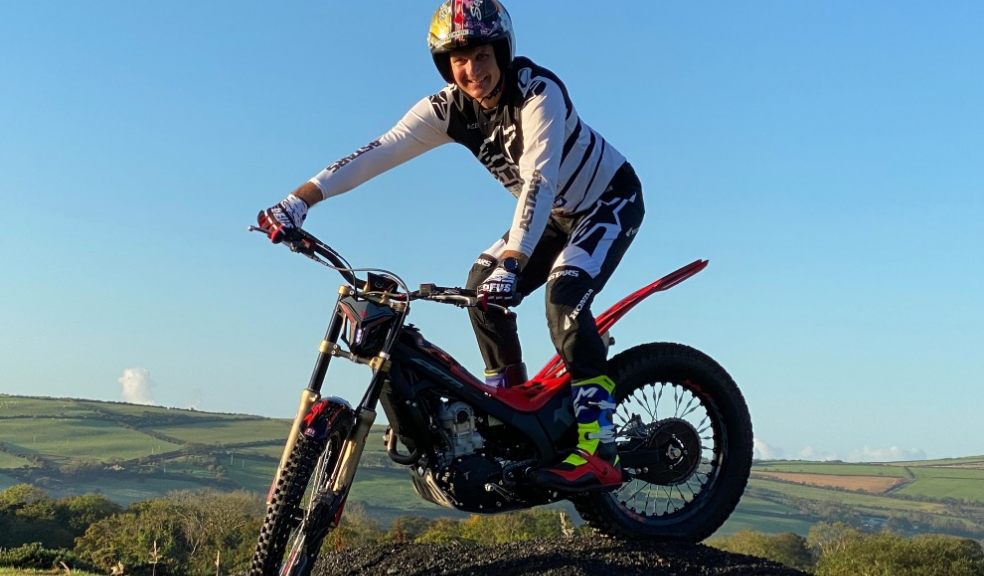
The Exeter hip: 50 years of making healthcare better
An innovative hip stem developed in Exeter 50 years ago today has now been implanted in more than two million patients across the globe.
The Exeter hip stem was developed in a collaboration between NHS surgeon Professor Robin Ling and University of Exeter engineer Dr Clive Lee, and is globally manufactured by Stryker. Their ground-breaking design overcame a problem of previous hip implants – that they eventually became slightly loose, requiring further surgery.
Previous prosthetic hips had been designed with the idea that the implant should remain rigidly fixed to the acrylic bone cement in which it is implanted.
Ling and Lee’s design was revolutionary. Unlike previous prosthetic hip stems, the Exeter design did not have a collar between the neck and the stem of the implant. This allowed the stem to subside slightly into the acrylic, self-tightening as it did so. This made best use of the material properties of the polymer when bearing weight as the person moved on their new hip. This helped to significantly reduce the number of follow-up revision surgeries needed 1.
Since the first implant on November 27 1970, the Exeter hip stem has been implanted globally in over two million patients, with one million happening in the last 10 years alone. In 2018, Universities UK listed the Exeter Hip among the 100 best breakthroughs from university innovation. Its success continues to grow, with research demonstrating its longevity.
A 2016 study, found the hip was still functioning well in 99 per cent of patients at 23 years follow-up2, and in another study in 2020, patients implanted with an Exeter stem 50 years or younger, demonstrated that the hip performed well over time in 96 per cent of people 3. Further research has found that the Exeter Hip Unit’s use of the Exeter hip stem for implants generates far superior results, when compared to the UK national average 4.
Dr Clive Lee, who worked at the University of Exeter when he co-created the Exeter hip, spoke of his pride at its longevity and success. “I started out not really knowing what a total hip replacement should look like – that was probably a huge advantage. I designed a very simple structure, and it turned out that going back to basic principles worked out very well indeed.
“We were aiming for a hip replacement that would last perhaps eight or nine years, and that would benefit patients locally. It’s a huge testament to the Exeter team and the university and NHS working together that it’s had such fantastic success. It’s a source of great pride.”
Professor John Timperley, Consultant Orthopaedic surgeon of the Princess Elizabeth Orthopaedic Centre and Nuffield Health Hospital, Exeter, said: “The Exeter stem is implanted in countries all over the world and since all National joint registries confirm excellent results, use of the Exeter hip continues to grow on all continents. This hip system has stood the test of time and continues to deliver a impressive clinical outcome fifty years later because the surgical team, in collaboration with Stryker continue to evolve and refine techniques.”
In 2016, the first Exeter hip implant was performed with Mako SmartRoboticsTM in Brisbane, Australia. Today, Exeter remains the only cemented stem available for robotic total hip arthroplasty, with Professor Timperley describing it a “perfect fit” for the robotic system.
Professor Janice Kay, Provsot of the University of Exeter, said: “The Exeter Hip is one of the great success stories of the expertise of university researchers and healthcare experts combining for the meaningful benefit of patients. It’s a collaboration at the heart of our ongoing world-leading research on a range of orthopaedic and musculoskeletal treatments. We’re so proud of the global legacy Exeter hip. As research continues to emerge to demonstrate its endurance, I trust the Exeter hip will still be celebrated as the best on the market for years to come.”
Jonathan Howell, Consultant Orthopaedic Surgeon at the Royal Devon and Exeter NHS Foundation Trust said: “The worldwide success of the Exeter hip replacement is really quite extraordinary. It started 50 years ago, in 1970, and for the first five years its use was essentially restricted to Exeter because its inventors, Professor Robin Ling and Dr Clive Lee, wanted to study its results closely. The results proved to be outstanding - word spread, and the reliability of the Exeter hip lead to its use extending across the globe. The Exeter hip has relieved the pain of those afflicted with hip arthritis, both old and young, allowing them to resume the activities that they enjoy. We have patients returning to hiking, swimming, tennis, golf, and even activities that people may not associate with hip replacements, such as skiing. It is such a privilege for us at the Princess Elizabeth Orthopaedic Centre to be custodians of this legacy and so rewarding for us to be able to improve the quality of life for so many people.”
"It’s incredibly rare to see an implant, or really any medical device, that has stood the test of time like Exeter.” said Kathy Truppi, Vice President of Marketing for Stryker’s Joint Replacement division. "We have always believed that the best orthopaedic products are developed by working closely with surgeons. Exeter's 50 years of success are a testament to that philosophy and I look forward to seeing how Exeter and Mako continue to advance the field of joint replacement and transform patient lives for the next 50 years."
Daring stuntman ends “decades of agony” by having two Exeter hips fitted
If you watch Steve Colley’s spectacular finale of pulling stunts on a trial bike which only has one back wheel, you’d have no idea of the medical intervention that keeps him wowing crowds – Steve has had both hips replaced.
At 48, Steve is more agile than ever before, having found relief from decades of “agony” caused by constant back and hip pain, after an operation two years ago in which two Exeter hips were fitted. Fifty years since its invention, in a partnership between the NHS and the University of Exeter, the Exeter hip is proving to be the most successful implant in the world, and has now been fitted in two million people.
Steve, who lives on the Isle of Man with extreme sports fan wife Liz and their four-year-old daughter Sophia, felt his successful show-biking career would have to end if he took no action. Before Covid, he was performing up to 35 weekends in the year, packing out high-octane shows for Honda across Mexico, America, Canada and Europe.
Unbeknown to the crowds, Steve was in a world of pain. He had always known that he was less supple and flexible than many of his peers, but now, the combination of slightly misaligned hips and his physically demanding lifestyle was destroying his body.
“I was in absolute agony,” said Steve, who rides a Honda 300cc off-road trial bike. “If I was walking up the stairs, I’d put my hands in my pockets to try use them to pull my legs up one at a time. My back was in spasm all the time, and my mental health as really beginning to suffer. I’d tried absolutely everything – tonnes of physio, and every pill, potion and gadget there is. I spent £6,000 on arthroscopy, a procedure that basically cleans out the hip socket and joint, but it didn’t make any difference. I was starting to think my career could be over.”
Then, two years ago, Steve travelled to the Royal Devon & Exeter Hospital for the life-changing operation to have both hips replaced with Exeter hip implants. The operation was a huge success. Even walking on crutches that same evening, Steve noticed a difference. “My back had been in spasm for 25 years, and even on that first night, I realised it had loosened up. It was no longer hurting. I’d developed a bit of a hobbling stoop, and I was already walking upright for the first time in years.”
After a few weeks of recuperation, Steve noticed even more improvements, and by week six, he was back on the bike. “It’s incredible,” he said. “Even now, every day I notice my range of movement is a little bit better. A lot of people have one left slightly longer than the other, and in most it doesn’t cause real problems. For me it did. The surgeons were able to make my legs exactly the same length. That means I have amazing balance now, which is key for trail riding. I’m riding better than ever before.”
Now, Steve is once again in the saddle jumping over buses, climbing stepladders and flying over ramps – although not without mishap. “A couple of months ago, I nearly ripped off my foot after I got it caught in the bike. Then, nine weeks ago, I broke my leg after landing awkwardly from a 15 foot drop. I’m ok now – but I’ve put a lot of strain on my body, and my hips have held out fine. If anyone’s concerned about having a hip replacement, I’d urge them to go for it as soon as you can. For me, the Exeter hip has been absolutely life-enhancing.”
Ballerina’s professional-standard arabesque on point after hip replacement
Ballerina Rachel Merga was devastated at the thought she’d never be able to do the splits again following her hip replacement, fearing it would end her chances to return to the stage. Yet three years on, Rachel is can execute the move, and many others, in her professional classes. The implant she received was the Exeter hip. Fifty years since its invention, in a partnership between the NHS and the University of Exeter, the Exeter hip is proving to be the most successful implant in the world, and has now been fitted in two million people.
Rachel, aged 50, said: “I was absolutely terrified when I realised I needed a hip replacement because I had arthritis. I delayed it for as long as possible, but I was in constant pain. I knew it was the only option.
“It’s made such a difference. I had no idea how much range of movement I’d be able to regain post-op, and my surgeons were honest that they didn’t know, either. They’d never had a patient with the range of movement I’d had to begin with. Immediately after the operation, I could only sit in a right-angle chair. Trying to do any exercise made my legs shake. But that only lasted a few weeks. Now, I can do the splits again, I can do multiple turns on one leg, I can arabesque, and leap across the floor. I’m comfortable in a professional-level dance class and I really feel ready to get onto the stage again. I had no idea if that would ever be possible again.”
Rachel, who lived near Honiton near Devon when the operation was carried out in 2017, and has since relocated to London, first encountered problems in her early 40s. “I just knew something was wrong,” she said. “As the pain got worse, I was devastated – I thought my career was over. There isn’t much information out there on dancers who have had hip replacements, even though it’s becoming increasingly common, and at younger ages. Dancing puts a strain on the body, and that can cause real hip problems.”
Rachel was diagnosed while dancing with a company in Washington DC, and touring the Mid-West and East Coast, but she delayed having surgery until she was dancing with companies in Denmark, then Sweden, when she realised the pain was unbearable. She returned to Devon, to consult specialists at the Royal Devon & Exeter Hospital, renowned for the world-leading Exeter hip implant.
Rachel said: “You hear these horror stories that you’ll never be able to sit cross-legged again after a hip replacement, but the surgeons there were brilliant. They really listened to me, and even watched videos of me dancing, so they could understand my range of movement. I had no idea if the operation would be successful, but I knew I had to go for it.”
Rachel, also a pilates instructor, slowly rehabilitated herself in the studio, making incremental progress until she could once again dance at professional level. “It’s amazing really,” she said. “There is a difference between my two hips – on the side that hasn’t been operated, there neurological connection is intact, so I feel my way into balancing. On the side that has been operated, I’ve had to relearn how to find my balance – it’s almost from the outside, rather than the inside. That’s been the biggest challenge, and I’m very pleased with the results. It’s such a tough time for dancers amid the COVID-19 pandemic. If it wasn’t for that, I think I’d be back on stage by now.”


















